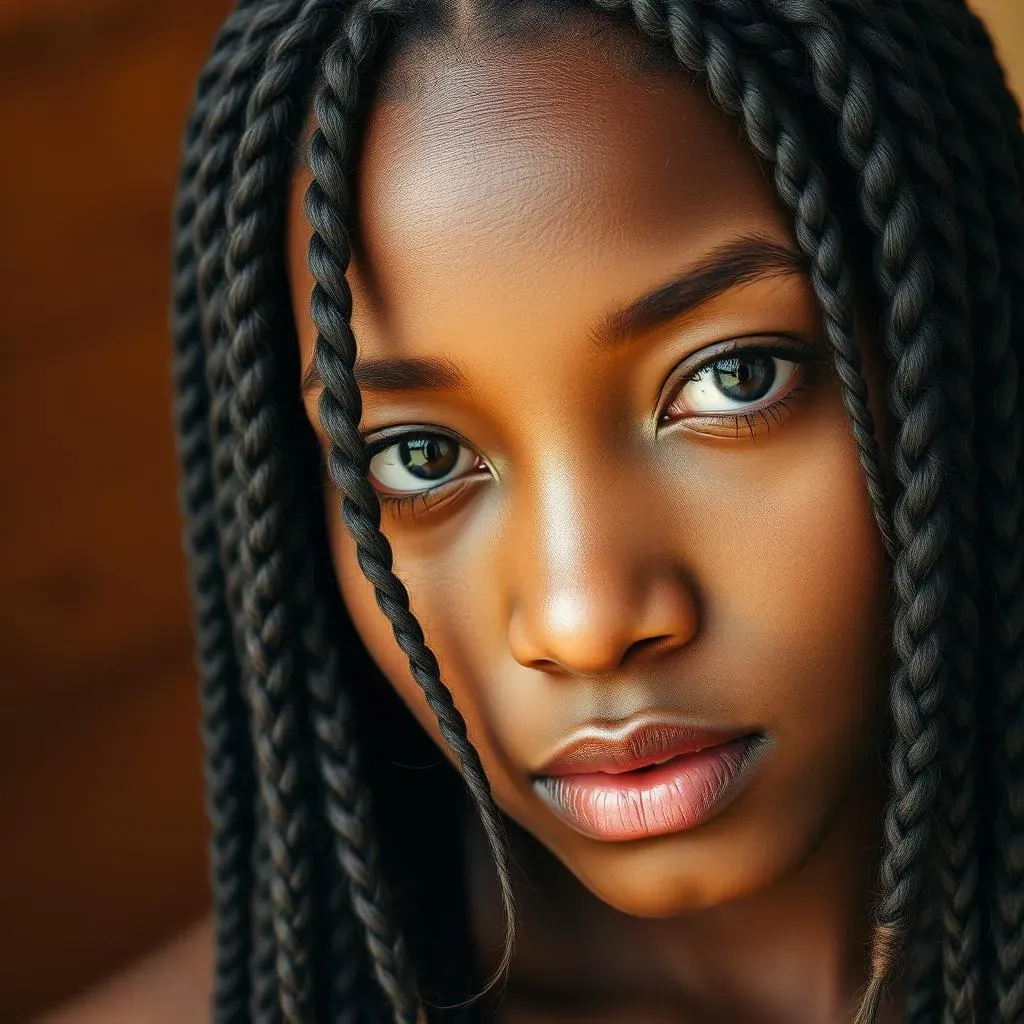Table of Contents
Ever wondered why your braids feel loose after a while? Is it a sign your hair's growing like crazy? Or is something else going on? This is a question many braid-wearers ask, and it's a totally valid one! This article will help you unravel the mystery behind loose braids. We'll explore the connection between loose braids and hair growth, examining the telltale signs that indicate new growth is the culprit. But it’s not always that simple! We'll also look at other reasons why your braids might be coming loose – things like improper braiding techniques or even just the natural weight of your hair. We’ll cover everything you need to know to determine if “when braids get loose is hair growing” is true in your case. By the end, you'll be able to confidently assess your braid situation and know how to maintain your stunning style for longer. Get ready to become a braid expert!
Understanding Hair Growth and Braids
Understanding Hair Growth and Braids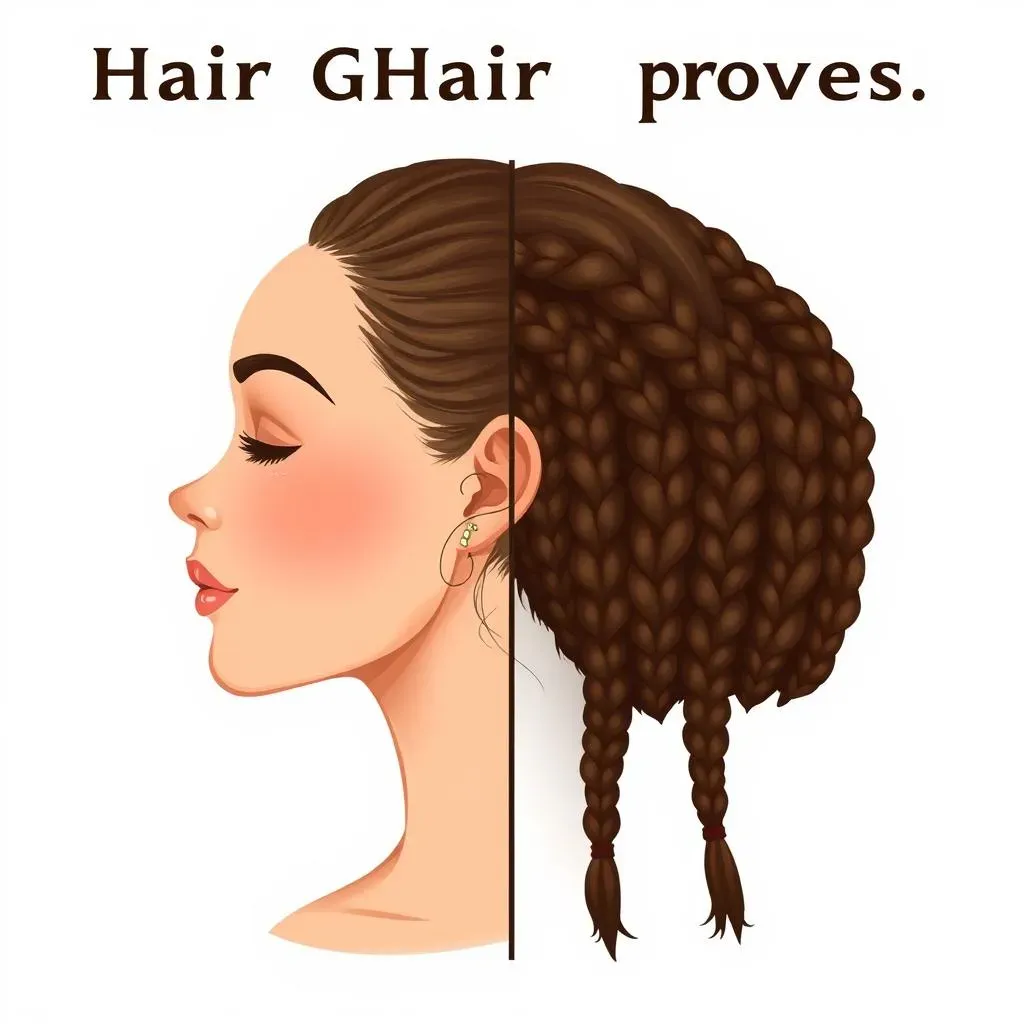
Understanding Hair Growth
Before we dive into loose braids, let's talk about hair growth itself. Your hair grows from follicles, tiny pockets in your scalp. Think of them as little hair factories, constantly producing new strands. The rate at which your hair grows is mostly determined by your genetics – some people are naturally blessed with faster growth than others. But things like diet, stress levels, and even your overall health can influence how quickly your hair grows. For example, eating a balanced diet with plenty of protein and vitamins is crucial for healthy hair growth. It's like giving your hair factories the best materials to work with! And while braids themselves don't magically make your hair grow faster, they *can* protect your hair from breakage, which helps retain length. Learn more about hair growth and braids.
Now, let's talk about the different types of braids. There's a whole world of braiding styles out there, from classic cornrows to intricate box braids and trendy knotless braids. Each style has its own unique characteristics and can affect your hair differently. For example, tightly braided styles can sometimes put more tension on the hair follicles, potentially leading to breakage if they're too tight. Conversely, looser braids generally cause less stress. Choosing the right braiding style and technique can make a big difference to the health of your hair and how long you can keep your braids in before they start to loosen. Check out different braiding styles.
Braiding Style | Tension Level | Potential Impact on Hair |
|---|---|---|
Cornrows | Medium to High (depending on tightness) | Can cause breakage if too tight; generally protects hair from damage. |
Box Braids | Medium (depending on tightness) | Can cause breakage if too tight; good for length retention if properly installed. |
Knotless Braids | Low | Generally gentler on the hair and scalp; minimizes tension. |
Braids and Hair Growth: A Closer Look
It's a common misconception that braids make your hair grow faster. That's simply not true. Your hair grows at its own pace, determined by your genes. However, braids can significantly impact how *long* you retain your hair. Because braids protect your hair from environmental damage (like sun and wind) and reduce the amount of manipulation your hair undergoes, they can help prevent breakage. Less breakage means more length retention, which can give the *illusion* of faster growth. This is because you're preserving the hair you already have. Think of it like this: if you're growing a plant, you wouldn't want to constantly pull off the leaves, would you? Braids offer similar protection to your hair strands. Learn more about protective hairstyles.
The key is to find a balance between a style that looks great and one that's gentle on your hair. Remember, even protective styles need proper care and maintenance to prevent damage. Regularly moisturizing your scalp and hair, avoiding harsh chemicals, and choosing a skilled braider can all make a huge difference in the health and longevity of your braids. Plus, if you're noticing significant hair loss or breakage, it's always a good idea to consult with a dermatologist or trichologist to rule out any underlying health issues. They can offer personalized advice tailored to your specific hair needs and concerns. Read our ultimate guide to braids.
- Choose a skilled braider
- Use gentle hair products
- Keep your scalp moisturized
- Avoid excessive heat styling
Signs Your Braids Are Loose Because of New Growth
Signs Your Braids Are Loose Because of New Growth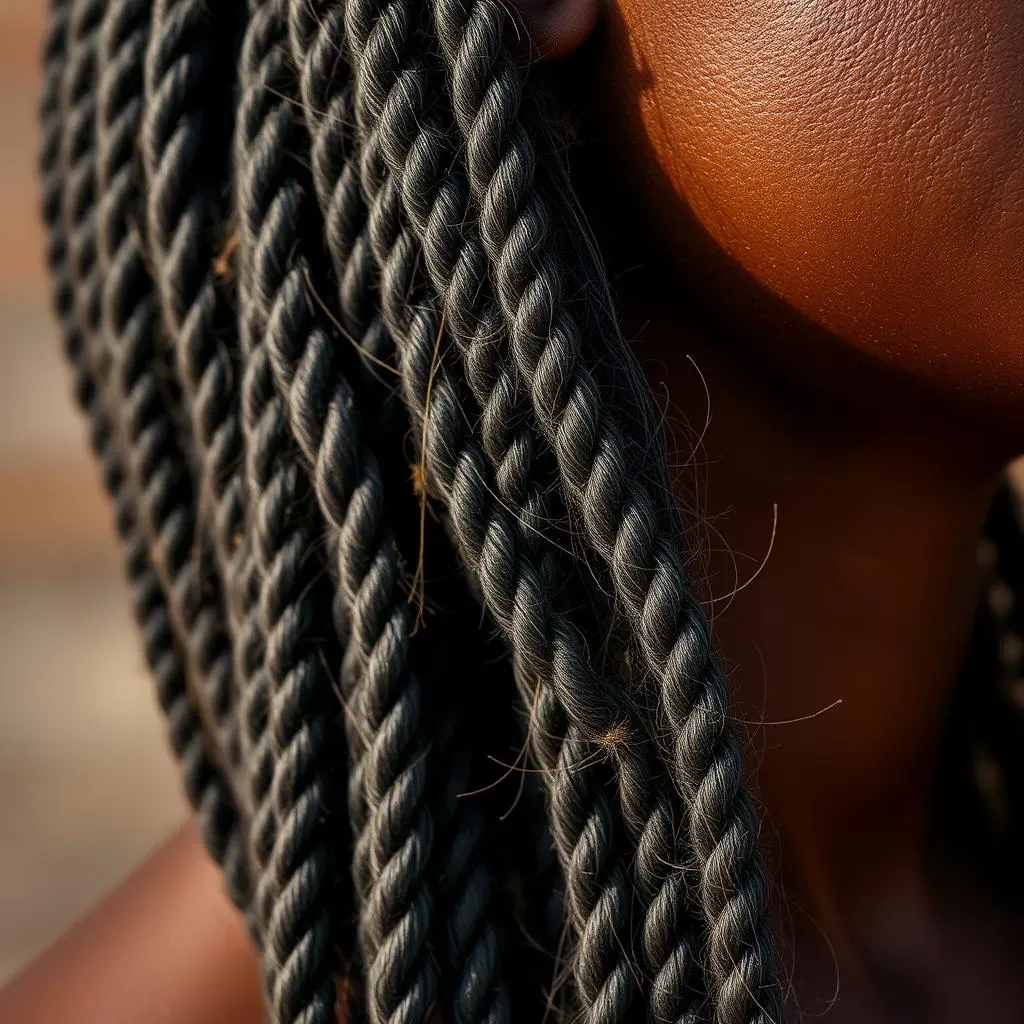
Loose Braids Near the Roots
The most common sign of new growth causing loose braids is looseness at the roots. As your hair grows, the added length creates more weight and can cause the braids to separate from your scalp near the base. Imagine a tiny plant pushing its way out of the soil – that's similar to how new hair growth pushes against your scalp and loosens the braids. You'll notice this most at the hairline and along the edges where your hair grows faster.
This looseness isn't necessarily a bad thing! It just means your hair is growing! However, if you notice a significant amount of loosening, or if your scalp feels extremely tight or uncomfortable, it might be a sign that your braids are too tight. Getting your braids redone by a stylist might be a good option. Learn more about braid maintenance.
- Looseness is most noticeable near the roots.
- The braids may feel slightly separated from the scalp.
- This is a natural sign of hair growth.
Visible New Hair Growth
Another clear sign that your loose braids are due to new growth is the actual visibility of new hair sprouting from the scalp. You might see small, fuzzy hairs poking out from under the braids, especially around the hairline or at the nape of your neck. These are those same "tiny plants" pushing their way out – only this time, you can actually see them! This is a definitive indicator that your hair has grown since your braids were initially installed.
If you're seeing significant new growth, you might consider getting your braids taken down and restyled. This will allow your scalp to breathe and prevent any potential irritation or damage from overly tight braids. Remember, keeping your hair healthy is key, and sometimes that means giving your hair and scalp a little break from braids. Learn when to take a break from braids.
Sign | Description | Significance |
|---|---|---|
Visible fuzzy hairs | Small hairs poking out from under the braids | Clear indication of new hair growth |
Increased scalp tightness | Feeling of pressure or discomfort | May mean braids are too tight, even with new growth |
Other Reasons Why Braids Loosen
Other Reasons Why Braids Loosen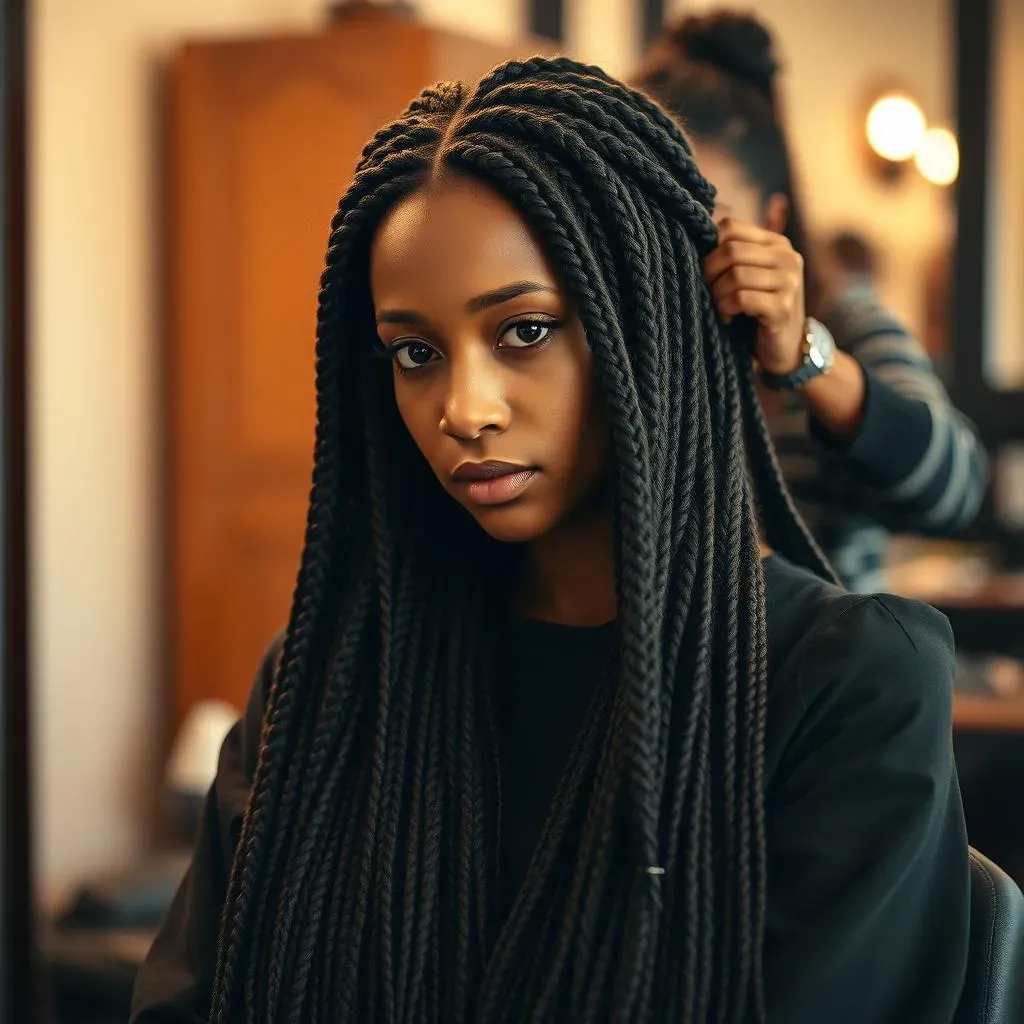
Improper Braiding Techniques
Sometimes, loose braids aren't about hair growth at all. It could be down to how the braids were initially done. If your braider wasn't super careful, or if they didn't use the right techniques, some braids might be looser than others from the start. This is especially true if the braiding was rushed or if the braider wasn't experienced enough. Think of it like building a house – if the foundation isn't solid, the whole thing might wobble! Similarly, if the braids aren't properly secured, they're more likely to come loose over time.
A skilled braider will ensure each braid is tightly and evenly woven, creating a secure base that can withstand the weight of your hair and the test of time. If you notice significant inconsistencies in the tightness of your braids, it's a good idea to consult with a professional braider for advice on future braiding sessions. They can help you identify any potential issues and ensure your next set of braids are flawlessly installed. Learn about proper braiding techniques.
- Uneven braiding
- Insufficient tension
- Improper sectioning
The Weight of Your Hair
Even with perfect braiding, the sheer weight of your hair can cause braids to loosen over time. This is especially true for those with thick or long hair. Imagine a heavy garland hanging on a delicate string – eventually, the weight will cause the string to sag. Similarly, the weight of your hair can pull on the braids, causing them to stretch and loosen, especially at the roots.
This is a completely natural process, and it's not necessarily a sign of anything wrong. However, you can minimize this effect by choosing a braiding style that's appropriate for your hair type and length. For example, those with very thick hair may find that larger braids help distribute the weight more evenly and prevent excessive looseness. Also, using lightweight hair products can help reduce the overall weight of your hair and put less strain on the braids. Find the best haircut for braids.
Hair Type | Braiding Style Recommendation |
|---|---|
Thick, long hair | Larger braids, fewer braids overall |
Fine, thin hair | Smaller braids, more braids overall |
Environmental Factors and Product Buildup
Believe it or not, external factors can play a role in loosening your braids. Exposure to moisture, sweat, or even just the natural oils produced by your scalp can weaken the braids' grip. This is why you might notice your braids loosening more quickly during humid weather or after intense physical activity. Think of it as the braids gradually losing their "stickiness" over time.
Additionally, product buildup from styling products, oils, or even just dust and dirt can also contribute to loosening. This buildup can make the braids feel heavier and less secure. Regular cleansing of your scalp is crucial for maintaining the integrity of your braids and preventing premature loosening. Using a clarifying shampoo every few weeks can help remove product buildup and keep your scalp healthy, which in turn helps your braids stay in place longer. Learn more about scalp care.
“The best way to keep your braids looking fresh is to keep your scalp clean and moisturized.” – Anonymous Braider
Maintaining Your Braids and Preventing Looseness
Maintaining Your Braids and Preventing Looseness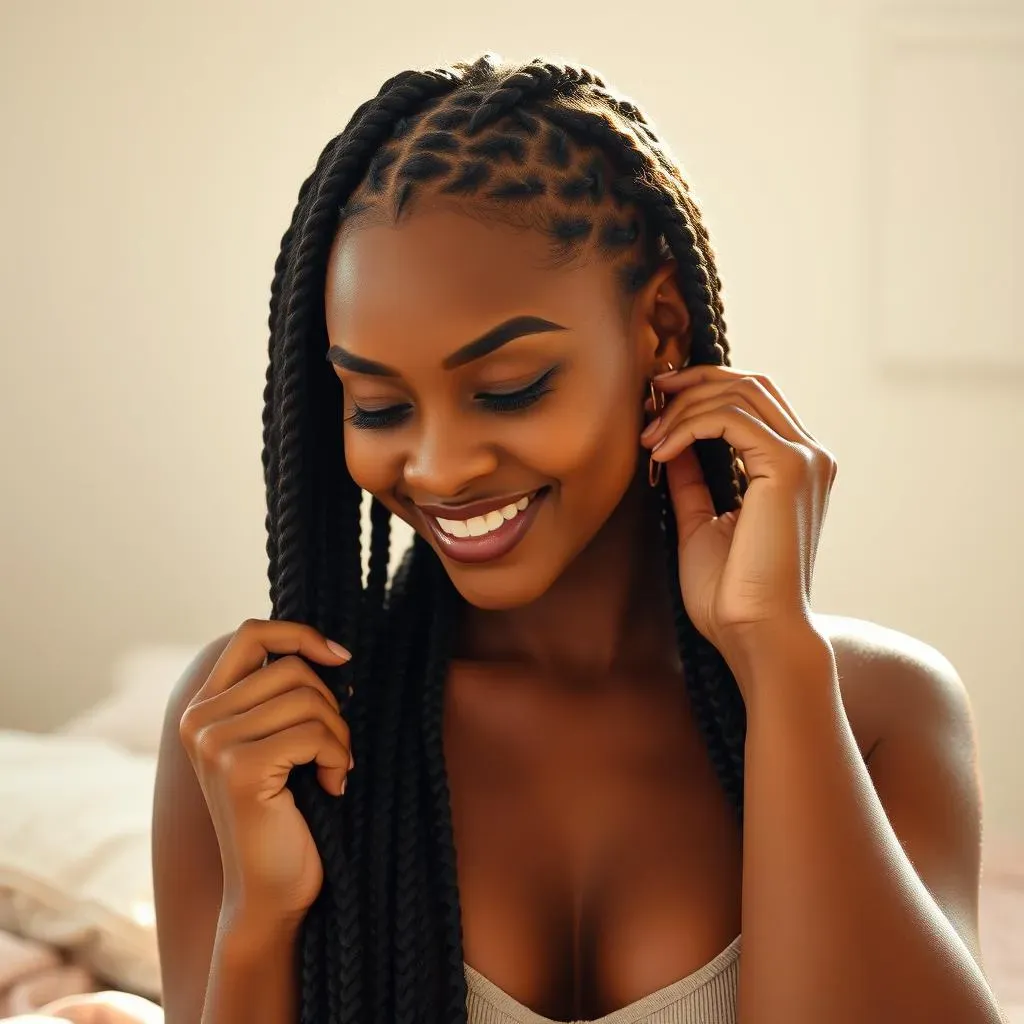
Regular Cleansing and Conditioning
Keeping your scalp clean is super important for long-lasting braids. Product buildup, sweat, and dirt can all contribute to loosening. Aim to gently cleanse your scalp at least once a week with a sulfate-free shampoo designed for braids. Avoid scrubbing too hard, as this can damage the braids and irritate your scalp. After washing, apply a leave-in conditioner or braid spray to keep your hair and scalp moisturized. This helps maintain the flexibility and strength of your hair, preventing breakage and loosening.
Remember, a happy scalp means happy braids! Regular cleansing prevents buildup, which can weigh down your braids and make them prone to loosening. Don't forget to focus on the scalp, not just the braids themselves. A clean scalp is a key ingredient for long-lasting styles. Discover more scalp care tips.
- Use a sulfate-free shampoo.
- Condition regularly.
- Avoid harsh scrubbing.
Protective Styling and Gentle Handling
How you treat your braids makes a big difference! Avoid pulling or tugging at your braids, and try to sleep on a satin pillowcase to minimize friction and breakage. Satin is much gentler on your hair than cotton, reducing the chance of your braids getting snagged or pulled. Also, try to protect your braids from harsh weather conditions like sun, wind, and rain, as these elements can cause dryness and weaken the braids.
Consider using a hair scarf or bonnet to shield your braids, especially when sleeping or going out in the sun. This additional protection can significantly extend the life of your braids. Think of it like protecting a delicate piece of jewelry – you wouldn't want to expose it to harsh elements, would you? The same care applies to your braids! Find more ways to style your braids.
Action | Benefit |
|---|---|
Sleep on satin | Reduces friction, prevents breakage |
Protect from weather | Minimizes dryness, maintains braid integrity |
